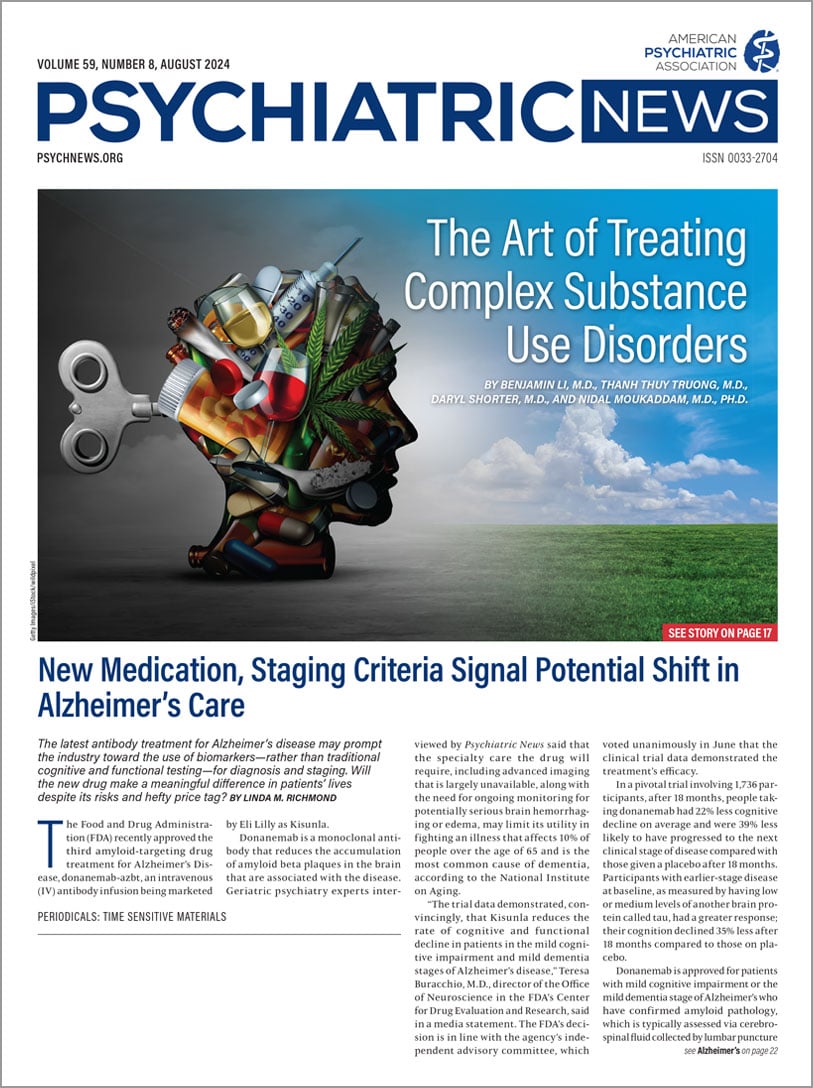Trichotillomania, or recurrent pulling out of one’s hair resulting in hair loss, is often not motivated by obsessive thoughts, according to an expert who reviewed recent advances in treatment for the disorder at the Annual Meeting.
“Trichotillomania is often a compulsion without an obsession, so it is the flip side of OCD [obsessive-compulsive disorder],” explained Jon E. Grant, M.D., J.D., M.P.H., a professor of psychiatry and behavioral neuroscience at the University of Chicago and director of the Addictive, Compulsive and Impulsive Disorders Research Lab. In fact, there is a growing consensus that there are several different etiologies for trichotillomania, and each may respond best to its own treatment approach.
“About one-third of people with trichotillomania find [the pulling] rewarding and describe it as an addiction,” he said. “They may have a fair degree of ambivalence about stopping,” he said, coupled with embarrassment about discussing the pleasure they get from the behavior.
For others, hair pulling may be a tic-like or motor behavior that individuals may not even be aware of doing in the moment. Yet others may indeed have obsessive thoughts that drive the compulsive pulling, for example, preoccupations that “particular hairs feel coarse or kinky,” or the “need to achieve smoothness,” he said.
How It All Starts
Grant said trichotillomania has a lifetime prevalence of 1.7%, similar to OCD and body dysmorphic disorder. Even so, it is a forgotten stepchild among psychiatric disorders, he added. “We don’t have an FDA-approved drug; we don’t have any interest from pharmaceutical companies in trichotillomania. So, this is my wakeup call to people.”
The disorder typically starts around adolescence, with an average age of onset between 10 and 13 years. Though some young children with excessive hair pulling outgrow it, Grant advised taking an active treatment approach with younger patients to avoid the excessive bullying and social isolation that they often experience.
Girls and women are four times more likely than men to experience it, he said. Around 15% to 20% of people with trichotillomania have another body-focused repetitive behavior such as skin picking, and 35% have a comorbid impulse control disorder, such as compulsive buying or internet use, he added.
On average, individuals wait 20 years before being diagnosed or treated, Grant said. “They often say, ‘I felt I just had a bad behavior, that I should be able to stop this, so why would ask a mental health professional (about this)?’”
Treatment Is Tricky
While there are some treatments that may provide relief, “the evidence base for them is woefully small,” Grant said. Studies have had very small sample sizes and no outside funding.
First-line treatments for trichotillomania are behavioral therapies, and various studies have shown that such therapy resulted in greater improvement than several medications, including clomipramine, fluoxetine, or placebo.
Chief among treatments for the disorder is Habit reversal therapy (HRT), which has been used for several decades. It consists in part of self-monitoring or “awareness training,” coupled with teaching patients to engage in “competing responses,” or keeping their hands busy until the hair-pulling urge subsides. HRT also involves “stimulus control,” or modifying the patients’ environment to reduce triggers. For example, moving the person from their bedroom, if that’s where the hair-pulling typically occurs, to the kitchen table to do homework.
A challenge is that it is very difficult to find psychotherapists experienced in HRT for trichotillomania, particularly outside of urban settings, Grant said. In addition, studies have shown only modest effect sizes for HRT in people with hair pulling and not a consistent benefit over the wait list condition, he added.
Two other psychotherapies that may provide some benefit include acceptance-enhanced behavior therapy and supportive therapy.
Grant also reviewed several decades of pharmacotherapy treatment research results for trichotillomania:
•
Antidepressants: Although they are first-line treatments in OCD, SSRIs have not been particularly helpful for reducing hair pulling, though they may help alleviate the accompanying anxiety. An
investigational study by NIH found that among tricyclic antidepressants, clomipramine works better than desipramine.
•
Atypicals: The antipsychotic
olanzapine provided benefit compared to placebo in reducing hair pulling but did not result in remission.
•
Alzheimer’s drug: Grant and colleagues tested memantine, which works on glutamate receptors, as a stand-alone agent (10 mg or 20 mg doses) in an
8-week, double-blind study of 100 adults with trichotillomania or skin-picking disorder. The drug was well tolerated and was associated with statistically significant reductions in hair pulling and skin-picking symptoms compared with placebo. Grant said that he prescribes 30 mg to his patients who show response to the medication.
•
Over-the counter option: A 12-week,
double-blind trial by Grant and colleagues found that 56% of adults with trichotillomania improved when taking over-the-counter glutamatergic agent N-Acetylcysteine (NAC), compared to just 16% of participants taking placebo. The supplement was well tolerated in the 1200-2400 mg/day dosages used in the study; however, NAC didn’t result in remission. Another drawback is that there are many different brands and a lack of quality control, Grant said.
•
Opioid agonist: A trial by Grant and colleagues found that naltrexone, which is approved to treat alcohol and opiate dependence,
was not more effective than placebo in reducing hair pulling. However, naltrexone did reduce the urge to pull among individuals who had first-degree relatives with alcohol use disorder. ■
